
I normally only watch Bollywood, if ever, to laugh. At the acting, the ridiculous stereotypes, the loony drama.
Though when the bad acting, ridiculous stereotypes, and loony drama are played out by Sikh characters, it’s a little depressing.
A lot of people would probably say that the quality of films coming out of Bollywood is improving. And that might be true if you’re talking about cinematography, but when it comes to depth in a plot, I haven’t seen any signs of improvement. But maybe Bollywood will pleasantly surprise its critics with Rocket Singh?

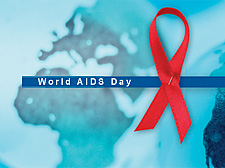 December 1st is World AIDS Day. Each year on this day we take the time to consider the impact HIV and AIDS has had on people around the globe. This year’s focus is on Universal Access and Human Rights. For as long as I can remember, the conversation has focused on the growing number of infections and deaths associated with AIDS. This year, however, the United Nations reports a notable decrease in HIV infections in some of the hardest hit areas of the world. It is clear, then, that the enormous amount of effort by HIV treatment and prevention programs have helped to provide education to raise awareness.
December 1st is World AIDS Day. Each year on this day we take the time to consider the impact HIV and AIDS has had on people around the globe. This year’s focus is on Universal Access and Human Rights. For as long as I can remember, the conversation has focused on the growing number of infections and deaths associated with AIDS. This year, however, the United Nations reports a notable decrease in HIV infections in some of the hardest hit areas of the world. It is clear, then, that the enormous amount of effort by HIV treatment and prevention programs have helped to provide education to raise awareness.
For three decades the world has been living with and responding to AIDS. Our response has often been too late or too little – and often both. But it has also often been unprecedented, groundbreaking and unpredictable. Activists and researchers have found common ground to work side by side to beat this disease. Together, they’ve developed new ways of conducting research and new ways of delivering healthcare in response to the AIDS pandemic. They’ve learned unexpected lessons and developed strategies that work against HIV and against other diseases. They’ve revolutionized public health. [link]
A recent NYTimes article discusses how humans may be born with an urge to help, and it makes me consider how very important this attribute is. Our communities rely so heavily on the help of each other – something we often take for granted. If humans are born with an urge to help, then Sikhi provides us with a strong foundation to make this happen. It is up to each and every one of us to seek out those opportunities. While World AIDS Day is a way to raise awareness about HIV/AIDS, it is also a reminder of the potential we each have to make a change. In Guru Nanak Dev Jis words,
![]()
In the midst of this world, do seva.
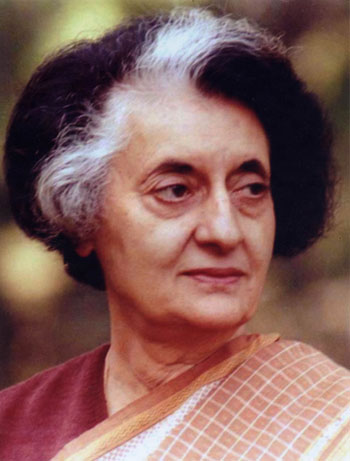 It was only a matter of time. Indira Gandhi created many myths during her tyranny. She created the myth of herself as ‘Kali’, the goddess of destruction following the war in Bangladesh in 1971. She created the myth of herself as “Mother India”, with a strong matriarchal love and care for her subjects. However, the most important myth that she helped create that has long captivated western audiences was the foundational myth of India’s independence – the nonviolence of Gandhi.
It was only a matter of time. Indira Gandhi created many myths during her tyranny. She created the myth of herself as ‘Kali’, the goddess of destruction following the war in Bangladesh in 1971. She created the myth of herself as “Mother India”, with a strong matriarchal love and care for her subjects. However, the most important myth that she helped create that has long captivated western audiences was the foundational myth of India’s independence – the nonviolence of Gandhi.
Richard Attenborough’s Gandhi is one the most well-known films about the subcontinent. In 1982, the movie was awarded the Best Picture by the Academy Awards. Ben Kingsley, who played Gandhi, and the director, Attenborough, also received individual credits. However, few have ever delved into the politics in the movie’s creation. In many ways, we find ourselves far removed from the world of art and into the territory of propaganda.
The funding of the Gandhi was highly unusual. Fully one-third came directly from the national treasury – could we ever contemplate money coming directly from the Treasury Department to fund a commercial, errr I mean movie? Propaganda at its best requires whitewashing and in the film we see a guiltless Nehru, the evil villain Mohammad Ali Jinnah, and a de-Hinduized Gandhi, without patriarchy, caste prejudices, or hypocrisy.
It was to be expected as the screenplay was checked and rechecked throughout the whole process, often directly by the then-Prime Minister, Indira Gandhi herself. Many noted that the opening credits of the film should have had the message: “The following film is a paid political advertisement by the government of India.”
I leave out a discussion for M. Gandhi for now, but will hope to take it up later. For now, we focus on the film. The success of the movie in terms of cultural capital cannot be emphasized enough. It was this movie that helped solidify the myth of India as related to Gandhi – overthrowing colonial rule, nonviolent, and wedded to the belief of equality for all. Indira Gandhi’s purchase still continues to reap rewards for India almost three decades later.
We now get the sequel.
Many politicians in America and Canada appeal to their Sikh constituents by visiting local Gurdwaras. Sometimes these visits include a brief speech and other times just a saroopa. Regardless, it’s usually an ask for votes.
What I particularly find powerful about Canadian politicians is that they will walk along side their Sikh constituency during Nagar Kirtans and visit the Harmandir Sahib. To me that is representative of the political power the Sikh community has in Canada. Politicians are not only appearing to give a “vote for me” speech or state a “thank you” for the saropoa. They need to do more to get the Sikh vote.
Sam Grewal of the Toronto Star writes:
“The Liberal party took us for granted and is now paying the price,” Gill says. “It would be a mistake for the Conservatives to think that simply appearing at functions is enough to win votes.”
An appearance by the Prime Minister, at the place most revered by Sikhs, may be the exception.
 I was really moved by this audio essay from Cecilia Muñoz titled “A Little Outrage Can Take You a Long Way” on NPR’s This I Believe segment.
I was really moved by this audio essay from Cecilia Muñoz titled “A Little Outrage Can Take You a Long Way” on NPR’s This I Believe segment.
In her reflection on activism, I connected with the statement about defeats outweighing victories, and how it motivates her to continue her work. Like many of the TLH readers, I too take time out my schedule for service activities. And after serving 100 or so meals at a homeless shelter, I go home feeling good about myself and the good deed I had done. Unlike Muñoz, I don’t stay awake thinking of the 100 or so people who were turned away that day at the shelter, or those who wouldn’t have a place to sleep that night. Maybe this is what separates me from real activists. To me, service has become an event or an activity – for an activist, service is a part of their life…part of who they are. They are constantly looking for ways to serve.
And I agree with Muñoz, “a little outrage can take you a long way.”
Although I don’t believe Guru Nanak was motivated by anger, I do believe he was outraged. Outraged by a society complacent with the rigid caste hierarchy, outraged at the imbalance of justice, and outraged by the barbaric methods of the State to suppress a minority. You can almost hear the outrage, when Guru Sahib describes the horrific events of Babar’s invasion:
Two great events are happening this Saturday: in San Francisco- “Women in 1984”; in New York- Lahir.
If you’re anywhere near either of these 2 cities, you better be there, or you’ll regret missing out!
Women in 1984
Dr. Cynthia Mahmood’s work deals directly with the issue of militancy and she will discuss the violence in Punjab from the macro lens of India as a democracy.Navkiran Kaur Khalra will speak of her own experiences as the daughter of S. Jaswant Singh Khalra and the heritage of his vision. The Khalra family’s narratives is inherently linked to the states backlash against movements desiring human rights and autonomy.Jasmine Kaur Marwaha, human rights lawyer for Ensaaf, will be discussing the the right to reparations for victims of the November 1984 pogroms, as well as victims of the Punjab counterinsurgency, from a gendered perspective.
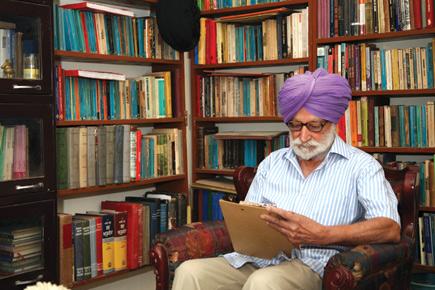 To be or not to be? Well, apparently for Surjit Singh Hans – it is to be. Hans, an academia based in Mohali, is undergoing the feat of translating Shakespeare’s work into Punjabi. Hans retired from Guru Nanak Dev University in Amritsar, where he had once been head of the department of history having done extensive work on Sikh literary sources and in particular the Janamsakhis. He has been working on this task for the past sixteen years.
To be or not to be? Well, apparently for Surjit Singh Hans – it is to be. Hans, an academia based in Mohali, is undergoing the feat of translating Shakespeare’s work into Punjabi. Hans retired from Guru Nanak Dev University in Amritsar, where he had once been head of the department of history having done extensive work on Sikh literary sources and in particular the Janamsakhis. He has been working on this task for the past sixteen years.
The translation follows the original line by line—you want to locate line 20, Act II, scene (i), in the Arden edition of Hamlet, all you have to do is look at the corresponding line in the translation. The iambic pentameter of Shakespeare has given way to the chaupai in Punjabi, but what matters is that these lines are almost as resonant in Punjabi as they are in the original English. They work well when read aloud, as Shakespeare is meant to be, and there is little here that a Punjabi can’t take to heart. Indeed, the heavy-headed revelry ‘takes from our achievements, though performed at height’. [link]
As for how well Shakespeare’s work translates into Punjabi, Hans suggests that King John could parallel the story of Aurangzeb and Two Noble Kinsmen could be a scene out of a Punjabi village (two men, one girl – hardly promising).
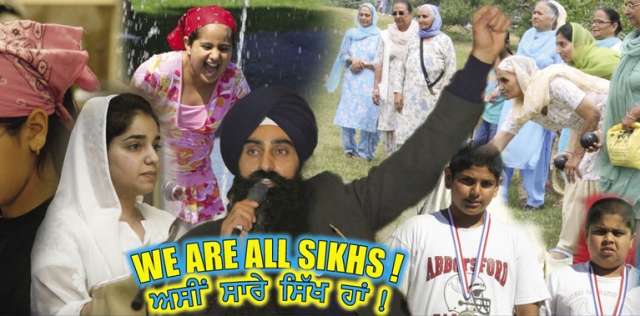 Although Gurdwara elections are usually not celebratory topics, the news surrounding the Guru Nanak Sikh Gurdwara in Surrey is especially noteworthy. We have covered the topic in the past a few times and the results seem to be in (again). The Youth Slate wins (again).
Although Gurdwara elections are usually not celebratory topics, the news surrounding the Guru Nanak Sikh Gurdwara in Surrey is especially noteworthy. We have covered the topic in the past a few times and the results seem to be in (again). The Youth Slate wins (again).
An overwhelming reason the story is worthy of discussion is due to the Canadian national media own interference and frequently call for Sikhs to vote against the “fundamentalist”/”conservative” slate. Statements such as these were far too common:
If elected, a slate of Sikh youth fundamentalist candidates could overturn a long moderate tradition of using tables and chairs for temple mealtimes.[link]
Well the community decided again and returned the “fundamentalist” candidates. I wonder if the Canadian media has ever delved and chose sides and support in church elections in the past? For some reason, I have a feeling this is rather a unique scenario. Although the media may not like the results the community speaks for itself.
The new committee under Bikramjit Singh will have a lot of work to do. They hardly built confidence after the last election, when it was discovered there were irregularities in their nomination processes. Still their agenda is broad and may have long-term ramifications in Surrey.
Regardless a victory of the community over the Canadian media’s portrayals and desire for specific results. Now we wait and see. The real work is about to begin.
Kash Gill, who grew up as a farm worker, will be sworn in today as Yuba City’s first Punjabi-American mayor. As many of you know, Yuba City (often referred to as the pindh of California), has a large Punjabi Sikh population. Just last weekend, 75,000 people gathered in Yuba City for the annual Nagar Kirtan. It is perhaps not surprising, therefore, that finally a Punjabi-American will be taking the seat of mayor. The event does, however, signify a signficiant step for a community that makes up about 12 percent of the population in Yuba City. The story also embodies the dream, which many immigrant communities carry with them – that by working hard and perservering, anything is possible.
“You’d never think you’d be picking peaches one day and the next day you’re the mayor of Yuba City,” he said. “That’s why we call it the land of opportunity.” After moving to the United States when he was 3 years old, Gill’s parents stressed that education was the path to leaving the life of farm laboring. [link]
Gill said his priority will be to improve flood protection for the community, reduce gang activity and offer opportunities for young residents. It should be added, that in Yuba City the mayor is chosen on a rotation system and while many of the comments (in the linked article) do discuss his Punjabi-American background, many more are focused on discussing his priorities and how they will benefit the people of Yuba City – as they should be.
Note: The Appeal-Democrat is hosting a live streaming video tonight of City Councilman Kash Gill being sworn in as mayor of Yuba City at www.appealdemocrat.com.
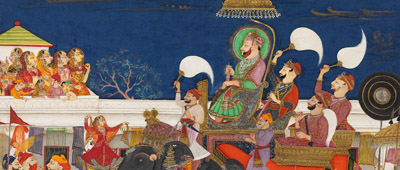 Guest Blogged by: Harinder Singh
Guest Blogged by: Harinder Singh
Last week I walked into the first exhibition to “comprehensively” explore the extraordinarily rich culture of the maharajas. “Maharaja – the splendor of India’s Royal Courts” is the feature exhibit at the Victoria & Alberta Museum in London and will be available through mid-January 2010. It was Susan Stronge, senior curator at V&A and friend of the Sikhs, who literally showed me the way to the V&A after a candid conversation over cafe latte about Sikhs, art, Orientalism, Barak Hussein Obama and Patwant Singh (late transnational Sikh ambassador). Her interest in my take on the Indian Maharaja’s depiction became the unusual catalyst to see the exhibition through two lenses: that of a Sikh and a South Asian.
Given that the number five in the Hindu numerology spans around business, marriage and romance, the five zones of exhibitions made sense. How the British have harbored such romantic notions of arbitrary boundaries of marriage and power in what it termed India! My journey through the exhibition started with the “Royal Spectacle” followed by the “Kingship in India.” It solidified with the “Shifting Power” that legitimized “The Raj’ which divided its subjects into “Princely India.” The only thing missing were the people, today’s South Asians.
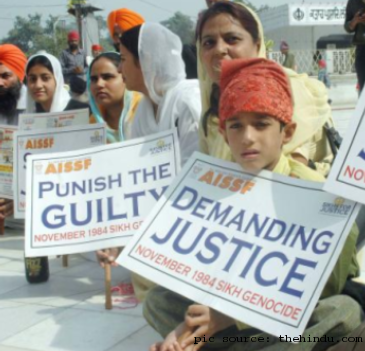 On Tuesday (November 3rd, 2009), various Panthic groups (‘radical’ Sikh organizations, if you follow Indian newspapers) called for a peaceful shutdown of stores, businesses, and state services to protest the continued impunity in which the perpetrators of the Indian Government-orchestrated pogroms in 1984 still roam free today.
On Tuesday (November 3rd, 2009), various Panthic groups (‘radical’ Sikh organizations, if you follow Indian newspapers) called for a peaceful shutdown of stores, businesses, and state services to protest the continued impunity in which the perpetrators of the Indian Government-orchestrated pogroms in 1984 still roam free today.
The ‘bandh’ was an overwhelming success in terms of its immediate call to action, although the larger purpose of its calling will probably continue to yield little results.
The strike call was given by the Dal Khalsa and was supported by the Khalsa Action Committee (KAC), Damdami Taksal, Delhi Sikh Gurdwara Prabandhak Committee (DSGPC), All India Sikh Students Federation (AISSF) and Shiromani Panthic Council.
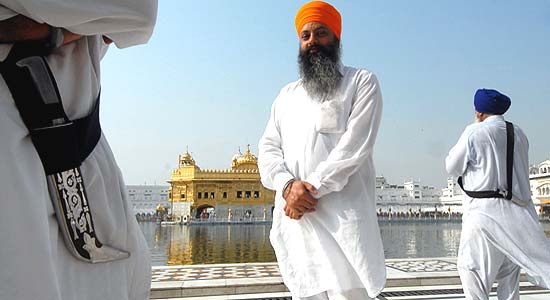 History often remembers transformative figures through the public images they become. Glimpses and insights into their private lives are rare. So an interview with Sant Jarnail Singh Bhindranwale’s son is a rare treat.
History often remembers transformative figures through the public images they become. Glimpses and insights into their private lives are rare. So an interview with Sant Jarnail Singh Bhindranwale’s son is a rare treat.
Ishar was just five years old when Jarnail Singh Brar was anointed the 12th jathedar of the Damdami Taksal. He left home and adopted the “Bhindranwale” after the village of Bhindran Kalan where the sect was originally located. “After that we only saw our father at his satsangs,” Ishar said. “But we were well looked after.” Did he miss his father? “From the family point of view I was sad, but from a Sikh point of view I was very happy.” The Jalandhar editor waved a laminated family photograph at me—a very young Ishar Singh with his eyes shut, an oddly self-conscious Sant Bhindranwale, his younger son Inderjit, his wife Pritam Kaur. [Outook India]
Ishar is the oldest of Bhindranwale’s two sons, and now a land realtor near Amritsar. He was 12 yrs. old during Operation Bluestar, studying Gurbani under Mahant Jagir Singh at Akhara village near Jagraon. [OI]
25 years ago history was made for several different reasons. Today, as we reflect on the invasion, on the assassination, and on the massacres, we come across multiple news articles which provide information and commentary on the events of that year. I wanted to take the time to document and highlight these articles as they’re worthy reads in providing information to readers around the world. I encourage you to read these pieces – they are vital to our understanding and they will inform Sikhs and non-Sikhs alike about events in our history.
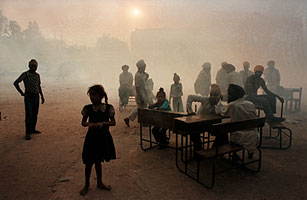 1. TIME magazine featured an article titled, “India’s 1984 Anti-Sikh Riots: Waiting for Justice.” Our readers have previously argued against the use of the word “riot” and suggested that “genocide” is the more fitting description of what happened. Regardless, this is an important article which discusses the often silent victims of 1984 – the widows and their children and the impact the events (and lack of justice) has had on their future.
1. TIME magazine featured an article titled, “India’s 1984 Anti-Sikh Riots: Waiting for Justice.” Our readers have previously argued against the use of the word “riot” and suggested that “genocide” is the more fitting description of what happened. Regardless, this is an important article which discusses the often silent victims of 1984 – the widows and their children and the impact the events (and lack of justice) has had on their future.
The widows’ colony in Tilak Vihar is a cheaply built and neglected cluster of homes, which were given by the government to hundreds of women and their children who survived what have become known as the anti-Sikh riots of 1984. But as the grim event’s 25th anniversary nears at the end of this month, crime, addiction and prostitution have taken root in what was supposed to be a survivors’ safe haven. Residents say this is because of the damage to the mental health of children who were witness to their parents’ and siblings’ murders and who grew up in impoverished homes and weren’t given any medical help — physical or mental — for their problems. [link]
Of note: for the 25th anniversary of the event, advertisements by Ensaaf — showing an old woman wiping away her tears, with the words, “25 years ago, our loved ones were burned alive in front of our eyes,” and in the next line, “Why has India, the world’s largest democracy, denied us justice?” — are scheduled for the month of November in the San Francisco Bay Area’s transit system!
 Through Sukhmani Sahibs, conferences, scholarships, film festivals, floats, and even ongoing camps, the Jakara Movement adds the next event to its on-going “Remember 1984″ campaign.
Through Sukhmani Sahibs, conferences, scholarships, film festivals, floats, and even ongoing camps, the Jakara Movement adds the next event to its on-going “Remember 1984″ campaign.
This November they begin their Remembrance Marches.
25 years ago there was a government-sponsored pogrom in Delhi and throughout many parts of India that left tens of thousands dead. Orchestrated by the Indian Government, the perpetrators of these pogroms roam free today. Join us and connect in solemn remembrance with Sikhs and non-Sikhs alike as we commemorate the events of 1984 and call for justice and bear witness to the genocide. We will not be silenced.[link]
The Event will consist of a series of silent marches in the various regions, followed by video screenings, speeches, and a candlelight vigil.
Attend one at a city near you:
- BAKERSFIELD – Silver Creek Park – Saturday, November 7th, 2009, 5-7pm
- BAY AREA – TBA
- FRESNO – Woodward Park – Monday, November 16th, 2009, 6-8pm
- RIVERSIDE – Glen Avon Heritage Park – Wednesday, November 18th, 2009, 6:30-8:30pm
For those in Bakersfield, this week (date to be updated) watch ABC affiliate KERO, Channel 23, to see members of the Jakara Movement talk about this weekend’s Remembrance March in Bakersfield.
For more information on the march visit the Jakara Movement blog, website, or Facebook page. See you there!
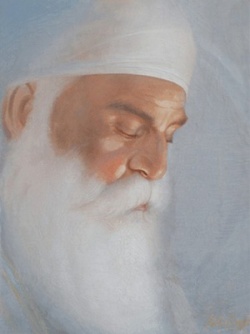 Gurpurab Greetings! As many of you know, today is Guru Nanak Dev Ji’s gurpurab. Guru Nanak Dev Ji bestowed much upon us, including the concepts of Naam Japna, Kirat Karni, and Vand Chakna.
Gurpurab Greetings! As many of you know, today is Guru Nanak Dev Ji’s gurpurab. Guru Nanak Dev Ji bestowed much upon us, including the concepts of Naam Japna, Kirat Karni, and Vand Chakna.
Naam Japna: Guru Ji taught us to directly practice Simran and Naam Japna – meditation on the word of the Guru and thus remembering God at all times.
Kirat Karni: Guru Ji taught us to live honorable lives and to earn honestly by our own physical and mental effort while accepting both pains and pleasures as the Guru’s gifts and blessings. Within this, is a reminder to stay truthful at all times.
Vand Chakna: We are taught to share our wealth within the community – especially with those who are most in need. The community or Sadh Sangat is an important part of Sikhi and this spirit of Sharing and Giving is an important message from Guru Nanak.
While today is a day of celebration, it is also a reminder to each of us to consider how we choose to practice these teachings today. Let’s wish each other well on this day, just like we wish each other well on New Year’s Day, and let’s encourage one another to follow the Guru’s teachings in our own ways. In this light, how are you celebrating this day?
Domestic violence organizations often use helplines to reach a larger population, while providing an anonymous format to offer help. The Punjab Government implemented a community health helpline 20 days ago to assist in locating ultrasound and abortion centers in a similar endeavour to protect women’s human rights.
The Chandigarh Tribune reports that this helpline (number# 4005252) is part of a pilot project coordinated by the National Rural Health Mission and has already reported a successful intervention. An ultrasound/abortion center in Sirsa, Haryana is being investigated after an anonymous caller reported that a young woman of Mansa village had recently aborted a girl child. Through immediate action, officials found that name/location of the ultrasound and abortion center. Also, they found out that the young woman had been forced to have an abortion by her mother-in-law. Now both the center and mother-in-law are under police investigation. The young woman is not being investigated since she was forced into the abortion by her mother-in-law after already having a 7 month old daughter.
Anurag Aggarwal, mission director, National Rural Health Mission says,
“The hotline gives an opportunity to women to speak up in case they are being forced to get their female fetus aborted. If she is not able to say anything, her relatives or friends can inform us. The caller’s identity is not asked and the whole thing is anonymous.”
The helpline at 4005252 runs from 9am-6pm and gives residents an opportunity to air their grievances and make their suggestions on health services in the state. Through successful implementation, the helpline is a good tool for practical action on the female foeticide issue. I wonder if we could create a similar helpline in various Diaspora communities because the rates of female foeticide are also high outside of South Asia. What do you think?
 Those of you who know my blogging tendencies, know that I wouldn’t pass up an opportunity to post about our favorite New Yorker! Waris Ahluwalia’s recent presence in Vogue (hat tip: Anandica) comes about as a contender for the prestigious CFDA/Vogue Fashion Fund award. The award helps emerging American designers pursue their design and business plans through financial support and professional mentoring. Waris Ahluwalia is one of only ten designers nominated for this award for his jewelry business, House of Waris. He states that his inspirations “have always been love and history. But I don’t claim to understand either of those.”
Those of you who know my blogging tendencies, know that I wouldn’t pass up an opportunity to post about our favorite New Yorker! Waris Ahluwalia’s recent presence in Vogue (hat tip: Anandica) comes about as a contender for the prestigious CFDA/Vogue Fashion Fund award. The award helps emerging American designers pursue their design and business plans through financial support and professional mentoring. Waris Ahluwalia is one of only ten designers nominated for this award for his jewelry business, House of Waris. He states that his inspirations “have always been love and history. But I don’t claim to understand either of those.”[Waris Ahluwalia] moved with his family from Amritsar, Punjab to Brooklyn, NY at the age of 5. He thought of becoming a doctor, a lawyer, risked one advertising interview, attempted to make a music magazine, got involved with a friend’s NGO for increasing HIV/ AIDS awareness in South Asia and found himself back in New York, immersed in the art life of the city. He then has a guy in New York make some jewellery for him, escapes the cold of the city for LA, helps a friend set-up a restaurant and one day, wanders into ultra-luxe boutique Maxfield’s where the owners spot his rings, immediately place an order, they sell out and House of Waris is born. [link]
What’s in the daal at the langar hall that makes it so yummy? Is it the shardhaa with which it is made or how it is allowed to slowly cook? Recently, I heard there was a CNN article on this issue by a South Indian (I am still trying to locate the article and will post the link soon), where the author attested to the speciality of the daal.
Recently, my mom raved about the daal at the Gurdwara. So what makes it special? I think its the shardhaa with which it is made. This shardhaa resonates in the way it is slowly cooked and how the spices are approximated before being thrown into the daal. It is also seen in the way it is served. The shardhaa with which we do any kind of seva, ultimately shows in the outcome. Often I have seen people who are doing tons of seva and wait for the recognition; while others have been doing the same seva for years and have made large leaps and bounds for our community without the same recognition. They never needed an organization, a job title, or a “following”-they just needed to see that fruit of their shardhaa (great work for our community). It is these individuals who should inspire us in doing seva. They fight for social justice issues, make langar for hundreds of Sikhs regularly, and clean the shoes of the sangat. However, you will rarely see them come to the forefront because they find their work more inspirational-it goes beyond who they are as individuals. Shardhaa- it’s that special ingredent that just makes seva extraordinary and unique-be it daal or social services.
How can Punjabi traditions, environmental awareness, and women’s space all be nurtured at the same time? Trinjan. Two organizations in Punjab recently teamed up to begin this. The Kheti Virasat Mission (KVM), 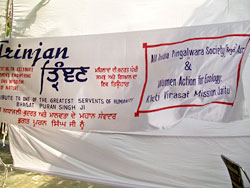 working towards sustainable agriculture, conservation of natural resources, environmental health and eco-sustainable technologies teamed up with Pingalwara, the org started by Bhagat Puran Singh in Amritsar as a refuge to care for those who had nowhere left to go. [Hat tip: Big B!]
working towards sustainable agriculture, conservation of natural resources, environmental health and eco-sustainable technologies teamed up with Pingalwara, the org started by Bhagat Puran Singh in Amritsar as a refuge to care for those who had nowhere left to go. [Hat tip: Big B!]
These two groups combined efforts to revive the lost tradition of Trinjan. KVM created a new initiative- the Women Action for Ecology to encourage women’s participation in an agro-ecological revival movement in Punjab.
From pictures on Pingalwara’s site, it seems that Pingalwara may have envisioned this first attempt at reviving Trinjan to be more a display of Punjabi traditions- natural foods, arts, and crafts. However a report from KVM envisions a much more active and central role for women in reviving Trinjan.
Since women are the first and worst victims of the agro-ecological crisis here and elsewhere, women need to work towards the mitigation process, for their own sake and for the sake of the community. Trinjan is an effort to mobilize women to appreciate their own traditional wisdom and role in the preservation and conservation of the environment in Punjab. Platforms for sharing of knowledge and spreading of practice are the main tool for empowerment of women in Trinjan. (emphasis added) [KVM report]
As we head into Bandi Chod Diwas/Diwali/Deva Diwali weekend, let’s listen to President Obama’s message! I appreciate his genuine effort to wish the South Asian community a happy celebration. I’m very impressed that he said “Sikh” correctly! About time we have a US President who gets it!

My only qualm (of course I have one) is that he chose to call the entire celebration “Diwali”. Diwali is more part of the Hindu religious narrative than in Sikhi or Jainism (although culturally “Diwali” is most commonly used). Nonetheless, I’m still impressed that he knew the varying significance that “Diwali” has for different religious groups. As he connects more with members of other South Asian faiths through his various initatives, I think he will learn more about the nuances of our communities.
Wishing everyone a Happy Bandi Chod Diwas/Diwali/Deva Diwali …! Enjoy the kirtan, lights, and mithayee!
